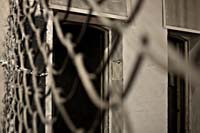NSW Corrective Services flags $45m revamp

In this year's budget the NSW Department of Corrective Services was given the green light to do some serious tinkering under the hood of its IT infrastructure.
The project, dubbed the REAL (remediation enhancement and architectural lifecycle) program, will run for four-years at a cost of $45 million, $14.9 million to be spent this year, Corrective Services CIO Wayne Ruckley told ZDNet.com.au in a recent interview.
"Technology has crept up on Corrections," he said. "The use of technology in a correctional environment probably started about 15 to 20 years ago. At that point it was very optional. It's grown to the point now where technology is a pivotal and mainstay point of a contemporary correctional environment."
The revamp, which Ruckley saw as unique because it dealt with the whole IT environment as opposed to just one part, would bring together systems which had sat in their separate silos. There were four streams in the project.
The first will concentrate on the department's offender integrated management system, converting what is currently a largely paper-based system to an e-case management system and integrating use of the system in different parts of the organisation such as correctional centres and the community. It would give a "single source of the truth over offenders", according to Ruckley.
The work also aims to provide mobile access to the system. "It's about also recognising that like many if not most organisations, technology solutions have moved from providing a fixed desktop to recognising that much of the work that happens in correctional centres and in the community by correctional staff happens on a mobile basis," Ruckley said.
The second stream will automate functions within HR, finance and asset management which would normally have been done manually. This would free up front line staff to manage offenders and might also provide some savings on providing the services.
The third stream was to combine all the information gathered and used in the correctional environment to improve decision making. "There's really quite significant change on that front to convert, if you like, an information system that's resided in people's heads, in filing cabinets, on post-it notes and on formal filing systems to an integrated information management system," Ruckley said.
The last area, where Ruckley thought almost half the spending would occur, was in improving network infrastructure for corrective services' 170 locations. "They've really suffered from a lack of contemporary technology in providing a local area network," Ruckley said. "We've had some issues with access to systems and processing speeds."
The revamp would allow staff to access systems when they need it at acceptable speeds. "It's an area that I think is quite often completely overlooked," Ruckley said.
The program is more thought to provide improvements in how correctional services are provided than savings, Ruckley said.
"I must say one of my concerns about technology and where it's going is that most technology initiatives seem to be predicated on what they can save as distinct from what value they can deliver," he said. "Our program is fundamentally predicated on the qualitative improvement it can bring to the provision of corrective services."
The department had "strident obligations" to reduce the rate of reoffending by 10 per cent over the next fifteen years, Ruckley said. This program was necessary to achieve that.
